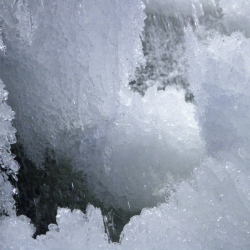
Researchers say meltwater from these vast blocks of ice release nutrients into the surrounding waters, triggering plankton blooms that absorb the carbon. Described as the first study of its kind, the authors examined satellite data between 2003 and 2013. The results have been published in the journal Nature Geoscience.
A team of scientists gathered data from 175 satellite images that tracked the passage of 17 giant icebergs (measuring more than 18km/11 miles in length) through the open waters of the ocean surrounding Antarctica.
Writing in their paper, the team observed: "We detect substantially enhanced chlorophyll levels, typically over a radius at least 4-10 times the iceberg’s length, which can persist for more than a month following passage of a giant iceberg."
They added that these findings suggest "this area of influence is more than an order of magnitude (more than 10 times) larger than that found for sub-kilometre scale icebergs."
Co-author Grant Bigg from the University of Sheffield, UK, said the results showed that giant icebergs had "much bigger plumes of phytoplankton (microscopic plant-like free-floating organisms) production in the ocean as a result of fertilisation by the iron that is in the meltwater… than we had previously expected.
"This means that the role of giant icebergs in the Southern Ocean carbon cycle is bigger than we had previously suspected," Prof Bigg told BBC News. When there is an increase in the availability of nutrients in the water, there is a corresponding increase in phytoplankton production.
These tiny organisms behave in a similar manner to plants on land, meaning that in order to obtain the necessary energy to grow and reproduce, they undergo a process of photosynthesis, which includes the absorption of carbon dioxide. When the phytoplankton dies, it sinks to the ocean floor, locking away the carbon it had absorbed.
